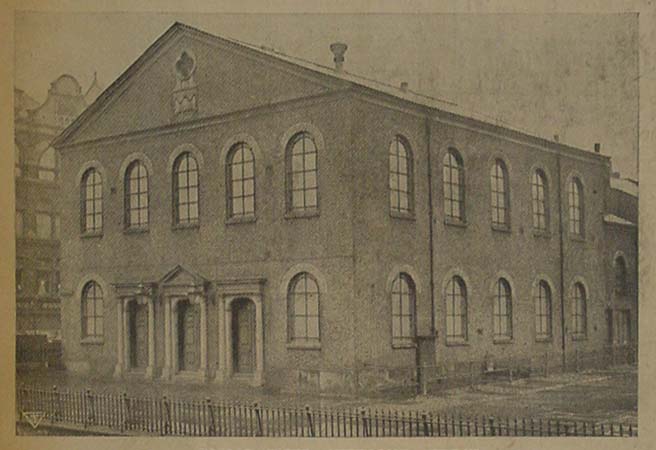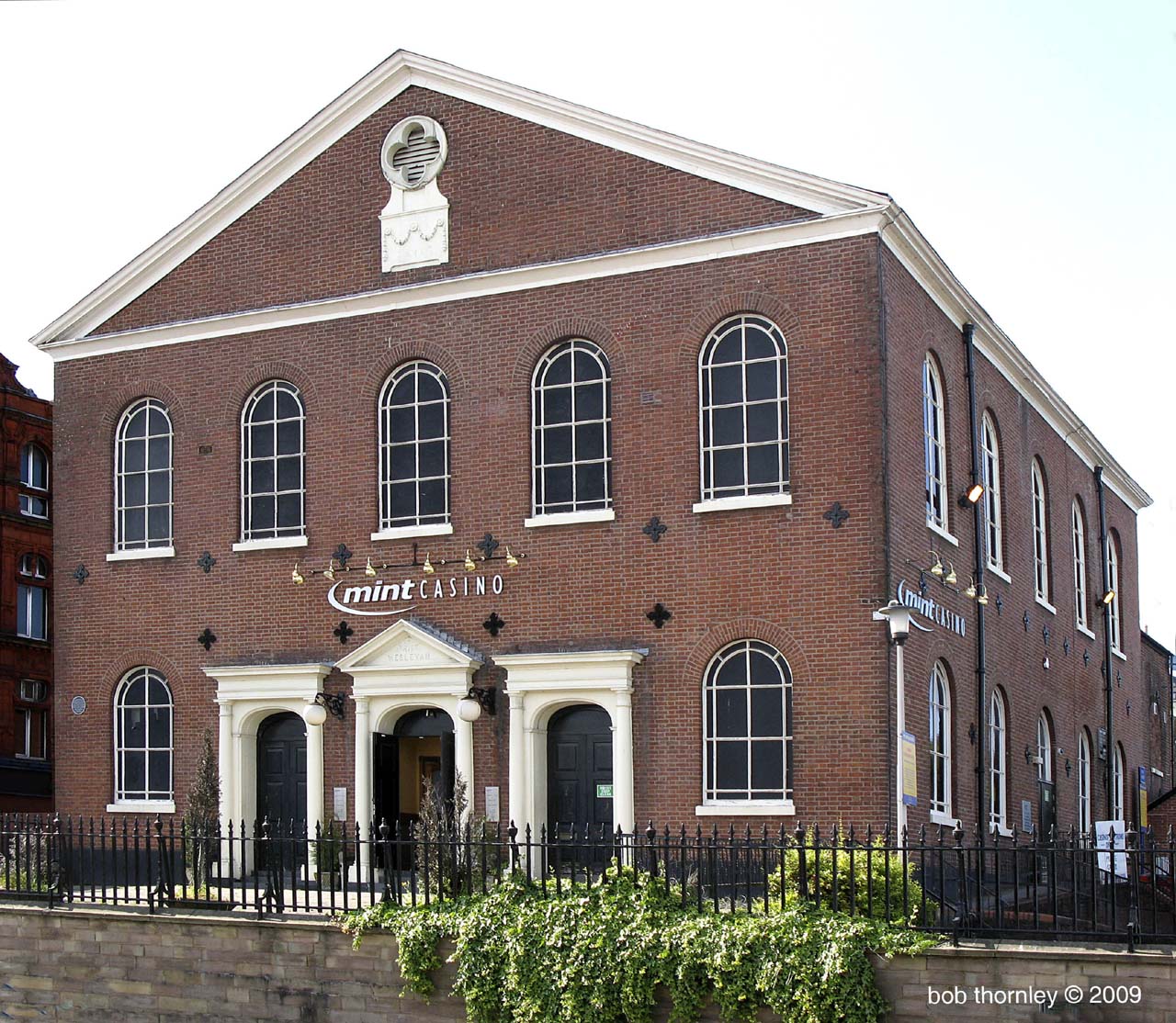 |
Bridge Street Wesleyan Chapel, Little Bolton |
 |
 | |
From The Bolton Journal and Guardian, Friday, April 3 1936, reproduced here by the kind permission of the Bolton News.
When John Wesley was born in the year 1703 the population of Great and Little Bolton was about 4,000. A century later, by which time Methodism had gained a firm footing in the town, the population had increased to more than 17,000.
Thanks to the work of John Bennet and the visits of Wesley himself the Methodist cause in Bolton continued to prosper and although it sustained a setback with the secession of Bennet in 1752 it made an excellent recovery, in that year the Wesleyans had built their first meeting-house on a (site?) near that now occupied by the Bolton Savings Bank in Hotel-st. By 1777 their numbers had so increased that other premises were necessary and thus Ridgway Gates chapel came into existence.
Up to the end of the century, Bolton’s population continued to increase and so too did the numbers and influence of the Wesleyans. Once more it became necessary to find larger quarters and the result was the erection in 1803 of Bridge-st. Wesleyan Chapel, which is now – since the Ridgway Gates chapel has been demolished – the mother church of Bolton Methodism.
It is one of the oldest unaltered buildings in the town as well as being the oldest Methodist sanctuary locally and it gives its name to Bolton’s oldest circuit.
Many names prominent in the history of Bolton, have, at one time been associated with Bridge-st. Chapel, the Knowles, the Moscrops, the Musgraves, the Marsdens and the Cannons.
As one might expect of a Methodist Chapel built at the beginning of last century Bridge-st makes no pretensions to architectural beauty and yet its austere simplicity, allied to its elevated position, make it one of the town’s landmarks. And whatever one may say about the plainness, the drabness (....?) barrack-like buildings associated with the early Methodists, one has to remember that such a place as Bridge-st, has been hallowed by the prayer and praise of a vast company of devoted worshippers who have loved its very austerity (tempered perhaps of late years by the art of the decorator) during its 132 years.
The chapel was opened on September 30th, 1804, by the Rev. S. Bradburn, its first minister. He was one of the most “powerful” and popular preachers in the country at the time. He was also noted for his eccentricities and austere manner.
Even on this opening day, which must have been a great event in the lives of Bolton Methodists, he could not refrain from one of his peculiar outbursts.
There was at this time, of course, no organ in the church, and the music was provided by trumpets, bass viols, horns, violins, hautboys, bassoons, etc. The choir had arranged to sing a chorus from the oratorio, “Israel in Egypt,” the words of which were: “The horse and his rider hath He thrown into the sea.” Choir and orchestra were lustily giving of their best – to the obvious enjoyment of everyone except Mr. Bradburn. Suddenly he turned to the performers and in a loud and angry voice exclaimed, “I say, put that horse in his stable, we’ve had enough of him today.”
Musicians and singers alike were over-awed by his manner and became abruptly silent.
In September, 1844, the first organ was erected at Bridge-st. at considerable cost, the preacher on this occasion being Dr. Osborn. A few years later, alterations and improvements to the interior of the church were carried out, including the installation of gas and the improvement of the heating system.
In 1849 day and Sunday school premises were erected behind the chapel.
The first local preachers’ plan for the Bridge-st. Circuit is dated May, 1810, and includes preaching places in and around the town and country, covering an area of many miles.
There was a heavy debt on the chapel on its erection, but in 1873 a vigorous effort was made, and it was cleared.
The Bolton Circuit was divided in 1857 into Bolton North and Bolton South – Bridge-st. and Wesley Circuits as they are now known. In 1865 Bridge-st. Circuit was again divided, Park-st. Circuit being formed out of it. In addition the original Bolton circuit included Farnworth, which has long been, of course, a separate circuit.
The growth of the town and the gradual outspread of the suburbs has left the Bridge-st. church as “a town church.” Yet many worshippers still come here from long distances, continuing their adherence because of family associations with “the old place,” rather than linking up with other Methodist churches nearer their homes.
 | |
| Bolton Home & Contents | ©Lancashire OnLine Parish Clerks | Lancashire Home |